1. Overview
Hanoi is the capital of Vietnam located in the north of the country, about 100 km from the coast. Hanoi is a city with a long history, associated with the ups and downs of the Vietnamese people. The city has many famous historical and cultural relics, and beautiful, poetic landscapes, enough for you to explore a Hanoi that is both simple but also lively and colorful. Hanoi is also a modern city, with many commercial centers, restaurants, hotels,etc. Hanoi city is a famous tourist destination in Vietnam and internationally.
One of the special works in Hanoi that you cannot ignore when talking about this place is The One Pillar Pagoda. One Pillar Pagoda Hanoi is one of the oldest architectural works in Hanoi City. The pagoda is located in the historical Ba Dinh relic complex, with extremely unique architecture. This is a spiritual cultural tourist destination not to be missed when visiting the capitol. Let’s explore the unique features of One Pillar Pagoda right away.
| Contact us to customize tour according to your preferences |
See more in this video:
2. Discover Top 7 Things To Know About One Pillar Pagoda Hanoi
2.1. History of construction of The One Pillar Pagoda in Hanoi
The One Pillar Pagoda is known by many different names such as Dien Huu Tu, Lien Hoa Dai or Mat Pagoda. The One Pillar Pagoda is the most famous work in the architectural complex of Dien Huu Pagoda. This work was originally built during the reign of King Ly Thai Tong in the winter of 1049 and completed in 1105 during the reign of King Ly Nhan Tong. During the reign of King Ly Nhan Tong, the Dien Huu pagoda complex was renovated. Add Linh Chieu Lake and decorate a gilded lotus flower on top of the pagoda.
Hidden in the lotus court is a purple-painted temple with an image of a divine bird sculpted on the roof, and inside there is a gilded statue of Guan Them. Because of having to go through years of constant war, up to now, the Dien Huu pagoda complex can no longer maintain its original state.
The current Lotus Tower project is a version that has been edited many times over the ages. Destroyed by the French when they withdrew from Hanoi on September 11, 1954 and rebuilt in 1955 by architect Nguyen Ba Lang according to the architecture left over from the Nguyen Dynasty.

2.2. The legend of One Pillar Pagoda
The One Pillar Pagoda is associated with the legend of the lotus flower in King Ly Thai Tong’s dream. Legend has it that during the Ly Dynasty, Buddhism in Vietnam was very developed. King Ly Thai Tong was also a follower of Buddhism and the Vo Ngon Thong sect. This dynasty alone built 95 new temples and restored all Buddha statues. In particular, on major Buddhist holidays, the king also exempted all taxes for all people across the country.
One night, the king dreamed that Buddha gave him a shining lotus flower. After waking up, he told the story to the court officials. After that, he and Zen monk Thuyen La built Dien Huu pagoda. Every year, on the 8th day of the 4th lunar month, the king goes to the temple to hold a Buddha bathing ceremony. Monks and people from all over Thang Long Citadel attended the ceremony. Next was the release ceremony, the king stood on a high platform and let a bird fly away, then the people followed the bird in the joyful cheers of a great festival.
Artist Trinh Quang Vu painted Dien Huu Pagoda by referring to ancient descriptive documents.
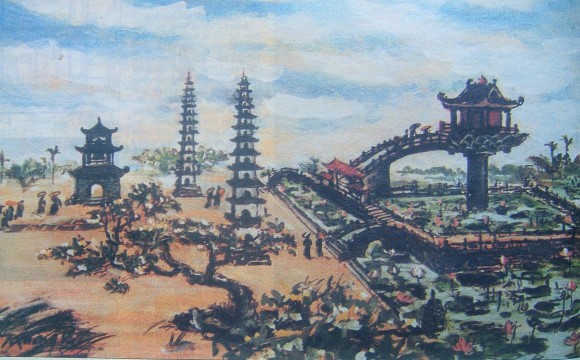
2.3. Unique architecture of One Pillar Pagoda in Hanoi
2.3.1. Lotus Station (Lien Hoa Dai)
The One Pillar Pagoda possesses unique architecture. The main structure is eight wooden beams symbolizing eight flower petals. All the joints are perfectly aligned when the architecture is complete, making it extremely sturdy. It is built on a large stone pillar, symbolizing a lotus flower standing in the middle of Linh Chieu lake.
The pagoda’s roof is covered with red scale tiles with four curved roof corners. Prominent on the roof of the pagoda is the delicately carved image of “a pair of dragons flanking the moon”, an image that brings harmony to the universe and protects the sacredness of the pagoda. Lien Hoa Dai is a place to worship Bodhisattva Avalokiteśvara. A fairly large altar is placed in the main hall, with a gilded Buddha statue sitting on a wooden lotus, surrounded by altar items such as candles, flowers, fruit and wine.
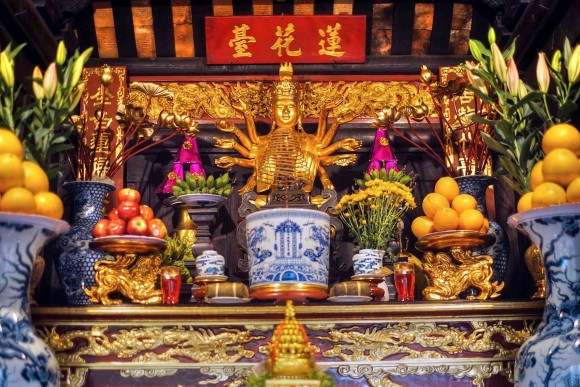
2.3.2. Tam Quan Gate (Tam Quan Gate)
In the grounds of One Pillar Pagoda, there is the Tam Quan Gate, with a horizontal panel engraved with the three words “Dien Huu Pagoda”. This gate was originally built many years ago but was recently rebuilt to expand the scale of The One Pillar Pagoda, creating a place for religious activities for monks and nuns as well as welcoming tourists. This majestic gate is placed in front of the pagoda in a very delicate way that helps simulate the traditional architecture of Vietnamese pagodas.
2.3.3. Stairs leading to the main hall
To get to the main hall of Lien Hoa Dai, visitors will have to step through 13 steps about 1.4 meters wide. These stairs were built a long time ago and still retain the architectural features from the Ly Dynasty. If the number 13 in Western culture symbolizes bad luck and disaster, then in Eastern culture, the number 13 symbolizes fertility and prosperity. Therefore, the 13 steps symbolize the temple’s blessing on pilgrims.
Another highlight of The One Pillar Pagoda is the Bodhi tree given by Indian President Rajendra Prasad on the occasion of President Ho Chi Minh’s visit to India in 1958. The Bodhi tree is still considered a typical tree in Buddhism, expressing its sacred and ancient beauty. Below the tree there is a stone stele, the content is “This Bodhi tree is originally from the Bodhi tree where Shakyamuni Buddha attained enlightenment in India. In February 1858, President Rajendra Prasad gave it to President Ho Chi Minh on the occasion of his visit to India.”
| Contact us to customize tour according to your preferences |
2.4. Where is One Pillar Pagoda? Directions to the temple
During the Ly Dynasty, the pagoda was built on the land of Thanh Bao village, Quang Duc District, west of Thang Long Imperial Citadel. Currently, the pagoda is located in Ba Dinh district, in the park behind Ong Ich Khiem street, near Ba Dinh Square and Ho Chi Minh Mausoleum. There are many means to get to The One Pillar Pagoda such as motorbikes, cars, taxi services, motorbike taxis, and buses, including:
For buses: you can catch routes 09, 22, 33, 45, 50. These routes all have stops at 15A Le Hong Phong, very convenient for visiting The One Pillar Pagoda.
For personal vehicles: you go North to the City Post Office, then choose the first way at the roundabout to Dinh Tien Hoang Street. Next, turn left at DC Gallery to enter Hang Gai, pass Hang Bong to Xoi Cam and turn to Dien Bien Phu. Move along Dien Bien Phu street to the road crossing Ong Ich Khiem and Hung Vuong, that is where you need to go. In addition, there are 3 other routes for your reference, specifically:
- Route 1: Giang Vo – Nguyen Thai Hoc – Hung Vuong.
- Route 2: Van Cao – Thuy Khue – Hung Vuong.
- Route 3: Ton Duc Thang – Chu Van An – Dien Bien Phu.
2.5. Opening hours and ticket prices to visit One Pillar Pagoda
Because it is located in the area of Ba Dinh Square and Uncle Ho’s Mausoleum, the pagoda’s opening time will also depend on these two locations. Accordingly, the pagoda will be open to visitors from 7:00 – 18:00 every day. Typical tour time ranges from 1 to 3 hours.
Vietnamese tourists who come to sightsee, worship or attend Buddha ceremonies at the temple will receive free admission. However, international tourists will have to pay 0.98 USD/person to visit the pagoda.
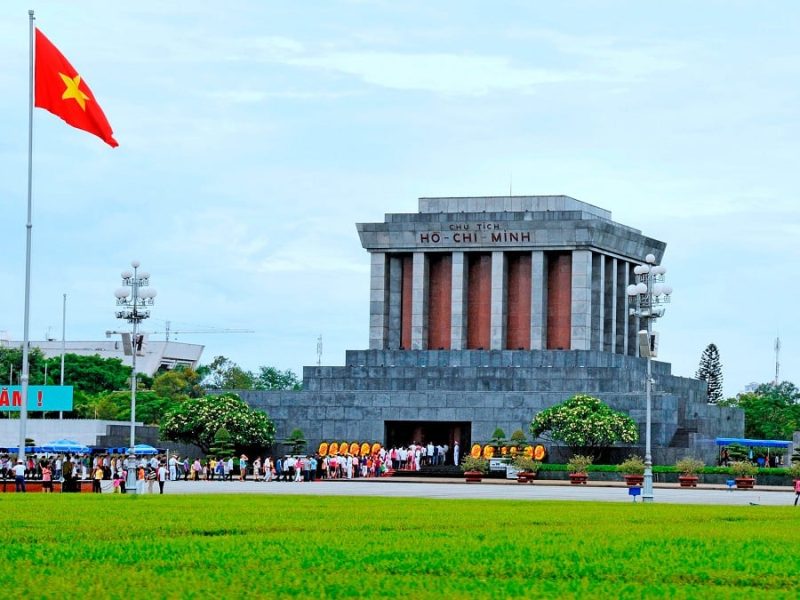
2.6. Places to visit near One Pillar Pagoda
One Pillar Pagoda is located right in the center of the capital so it is quite close to famous relics. After visiting the One Pillar Pagoda, visitors can visit a number of other tourist destinations: Presidential Palace Relics, Presidential Mausoleum and Ho Chi Minh Museum.
In addition, West Lake is also located in the center of this area with other famous places such as: Tran Quoc Pagoda, Kinh Thien Palace, Thang Long Imperial Citadel, Hanoi Old Quarter, Temple of Literature – Quoc Tu Giam, Hoa Lo Prison, etc. Check out more Hanoi tourist attractions to arrange an attractive tour schedule for yourself!
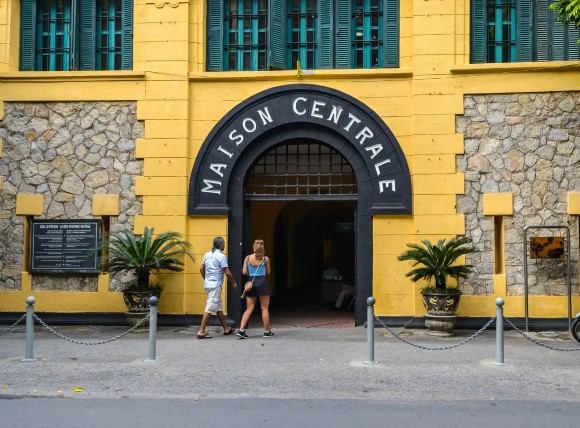
2.7. Some notes you need to know when visiting The One Pillar Pagoda:
When visiting the pagoda, visitors should note the following issues:
Choose discreet, polite clothing when visiting the pagoda and avoid wearing pants or skirts above the knee.
Pay attention to signs to avoid entering restricted areas.
Walk softly and speak softly, do not touch ancient artifacts in the pagoda grounds.
Maintain landscape and general hygiene.
Follow the temple’s regulations and do not commit illegal or superstitious acts.
While burning incense, place the incense in the correct position and do not drop money into the lotus pond.
Comply with the pagoda’s thanksgiving ceremony time to avoid affecting the ceremonies and activities of the community of believers.
Along with Hanoi, Vietnam boasts many other attractive destinations such as Phu Quoc, Nha Trang, Hoi An, Da Nang, Ha Long Bay .You can experience our outstanding tours in Hanoi as follows:
Amazing Hanoi and Ho Chi Minh Tour – Vietnam 7 Days Tour
Vietnam Discovery 11 days From Sai Gon To Hanoi
Hanoi – Pu Luong Natural Reserve
Half-Day Morning Hanoi City Tour
| Contact us to customize tour according to your preferences |
3. Conclusion
These are Discover Top 7 Things To Know About One Pillar Pagoda Hanoi that Metta Voyageshares with you. Hope you have the most exciting trip experience when you come here. Also, don’t forget to visit our blog to see many other interesting travel experiences.
4. Contact us
Website: www.mettavoyage.com
Email: info@mettavoyage.com
Hotline 24/7: + 84 989 383 572

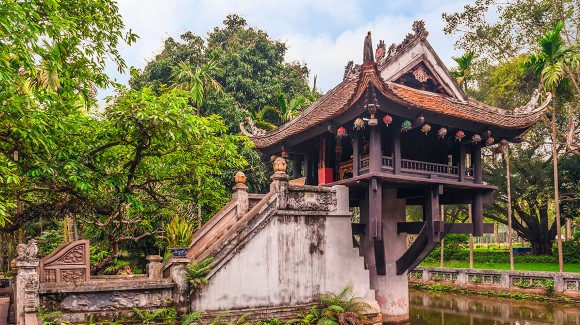
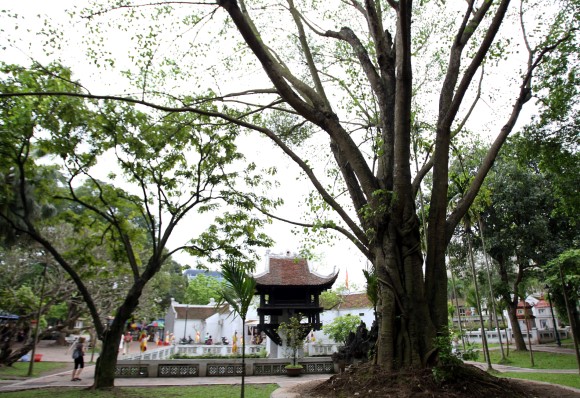

0 Comment